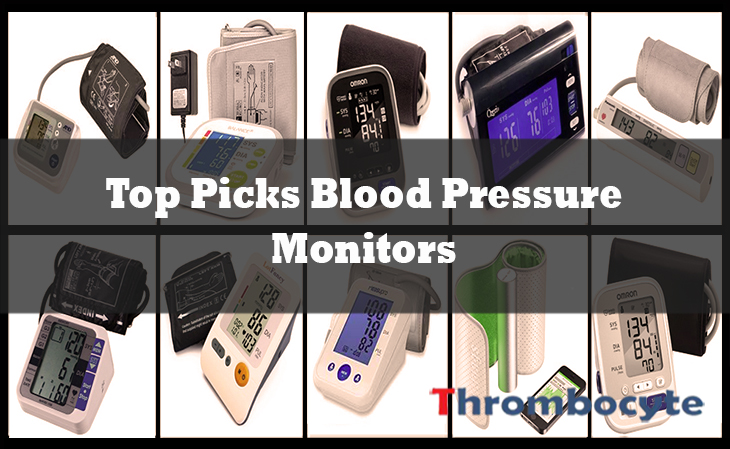A high platelet count, also known as thrombocytosis, indicates the existence of an increase in the amount of thrombocytes or platelets in the blood. It is a component of the blood that helps with blood clotting in response to injury. An increase in platelet count is not an unusual occurrence in young children.
A normal platelet level ranges between 150,000 to 450,000 for every microliter of blood.
Undergoing medical procedures and specific tests for platelets help in the diagnosis of possible blood platelet disorders along with any abnormal health changes, especially with associated factors like bone marrow functionality.
Unless there are other accompanying factors that may be of concern, it really isn’t necessary for parents to worry much about the display of high platelet count in children. Not unless the condition persists and does not correct by itself. Watch out for these high platelet count symptoms.
Common Causes of High Platelet Count in Children
1. Benign Increase
Up to 13 percent of children suffer from thrombocytosis, according to “Thrombocytosis in Childhood” by E. Mantadakis. An increase in the number of platelets does not always indicate an underlying disease. If the condition is benign, it can be a temporary effect of medications, blood loss, or surgery.
Infection is the most common cause of platelet elevation in children. Laboratory tests include samples of venous blood taken from the patient, diluted, and analyzed — something usually done by passing the sample through an electric counter. However, automated counting has often been associated with falsely identified elevation in platelet counts.
Venous blood is the deoxygenated blood that flows from the peripheral vessels (tiny capillary blood vessels), through progressively larger veins of the venous system into the right atrium of the heart. The venous system is composed of blood vessels that carry blood towards the heart.
2. Possible Diseases
An elevated platelet count can also be a sign of serious medical conditions such as connective tissue diseases, kidney disease, liver tumors, some anemias, polycythemia vera, inflammatory bowel disease, or leukemia. It can also be suggestive of a disorder that causes the bone marrow to produce more than the normal amount of platelets.
If a child is very ill, then a complete patient history and physical examination will be necessary, and a range of other tests may be included in the treatment, to rule out specific medical conditions.
Platelet levels may require regular monitoring until it is certain that the amount have not only returned to normal, but will also remain that way.
3. Primary and Secondary Thrombocytosis
Most cases of thrombocytosis in children are secondary in nature, which means that an increase in platelets develops as a result of another condition, benign or not.
Primary or essential thrombocytosis, where the condition occurs on its own, is rare. It has an incidence of about one in 1 million children. It follows a variable course and not well understood. The medical condition displays increases in platelet amount to levels above 600,000 per microliter where the spleen is enlarged.
Unfortunately, if the condition does not improve, removal of the spleen may be necessary — but only of extreme measure.
4. Inflammation
One of the several causes for higher platelet count in children is inflammation. Platelets are also known as “acute phase reactants”, which means that they rise in number whenever there is inflammation (like an infection).
Infections whether minor or severe can have a drastic effect on platelets, which is why whenever a child experiences a problem with high or low platelet levels, examinations are performed to rule out any infection first, before worrying about other causes.
5. Iron Deficiency
Iron deficiency can also cause high platelet count in children, where the person is usually anemic, because these two medical conditions normally occur together. This may be another condition that will not require strict doctor intervention, but certainly needs to be monitored.
6. Dehydration
It’s not uncommon for many children to exhibit an elevated platelet count when they are slightly dehydrated. It should return to normal once they drink enough fluids that end their dehydration.
With all the running around and playing that children do every day, they don’t have to be sick to become dehydrated. You shouldn’t dismiss dehydration just because they aren’t ill.
7. Tissue Injury
One of the most frequent causes of secondary thrombocytosis in children is tissue damage which may include burns, surgical procedures, fractures, other trauma, or tissue ischemia. If treatment of the damage fails to do the job, you may have to consult your doctor to identify any underlying cause. The human body can be complicated where there may be hidden reasons for something abnormally going on.
8. Reactive Thrombocytosis
It is a secondary to an underlying condition such as infection, iron deficiency, drugs, chronic inflammation, cancer, tissue damage, and surgical or functional splenectomy.
In 72-86% of the children who develop the condition, it’s usually mild – where moderate goes for about 6-8%, and 0.5-3% for extreme. If the condition persists, a consultation with a pediatric hematologist will be necessary.
In the majority of cases, no treatment is needed and the patient must only be closely monitored.
9. Essential Thrombocytosis
For most children who experience thrombocytosis, it is usually self-limiting and does not necessitate any treatment. However, if repeat blood tests show a prolonged, unexplained elevation of platelet numbers or irregular characteristics, the physician will have to explore the situation further.
Essential thrombocytosis is an uncommon disorder where the body creates too much blood platelets (thrombocytes). It’s also known as essential thrombocythemia and primary thrombocythemia.
Bleeding problems may exist, such as inability of the blood to clot. Essential thrombocytosis can be fatal. For children afflicted, the platelet count can reach levels of over 2 million per microliter.
The most common symptoms are headache, lightheadedness, vision changes, tingling, numbness, or burning pain in the hands and feet.
10. Idiopathic Thrombocytopenic Purpura
Fortunately, idiopathic thrombocytopenic purpura in children usually runs its course without requiring complex treatment, unless severe bleeding is present. Around 80% of children who have idiopathic thrombocytopenic purpura recover fully within six months whether or not treatment is given. Even in children who develop chronic ITP, full recovery can still happen, even years down the road.
While it is rare, regardless of age or platelet count, severe bleeding can occur with ITP. If this is the case, or if the bleeding becomes widespread, it is considered life-threatening that it requires emergency care. Disease management normally includes transfusions of platelet concentrates, intravenous methylprednisolone (a type of corticosteroid), and intravenous immune globulin.
Especially in children, due to the possibility of severe complications resulting from the disease and course of treatment, it’s vital to carefully weigh the benefits and risks involved in the treatment of the child.
High platelet count in children should be monitored, but is often nothing to worry much about. In fact, the increase is common in infants and children where majority of the cases are secondary or benign.
Before you panic, monitor to see if the platelet count will adjust in itself. In most cases it will, and that will be the end of the problem. Read about ITP treatment options.
If the condition keeps recurring, then perhaps something more serious may be present and your physician should pursue the matter.
- READ MORE




